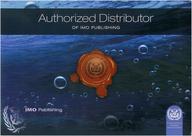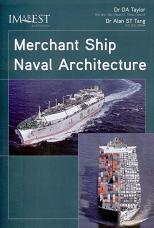Catálogo - LIBROS NÁUTICOS - Teoría del buque, Construcción naval
Merchant Ship Naval Architecture
Autor: DA Taylor, Alan ST Tang
Editorial: Institute of Marine Engineering (IMAREST)
Año de edición: 2.006
9781902536569
Encuadernación: rústica
216 pág.
15,5 x 23,0 cm.
58,50€
Contenido:
At some point during their careers, marine engineers are likely to encounter the science of naval architecture, particularly during their early years and perhaps several years later when the may need a "refresher" in the subject. Tis 12-chapter book sets out to provide both and at many points in between. It will also be of benefit to those embarking on a carrer as a naval architect, providing much useful information.
It begins with a chapter on ship types, describing the majority of vessels, large and small, that are in service today and will be in the years to come. Several types are illustrated by diagrams with salient features clearly marked. This is followed by a chapter that defines a ship and its parts, and introduces the terminology used. This theme is continued in the next chapter covering rules and regulations as well as tonnage definitions.
Methods used in calculating the areas and volumes of ships' hulls are next explained and worked examples -an important feature throughout the book's chapters- are given making each calculation easy to follow. Such calculaions form a necessary part of following chapters wich have the self-explanatory headings as: buoyancy, stability and trim; ships and the sea; structural strength; and resistance. The latter chapter also features the use of model testing and its relationships to full scale ships.
The book then moves on to the subjects of propellers and propulsion; manoeuvring and motion control; and vibration, each of which is described from from first principles through to the various formulas used in the necessary calculations relating to the appropriate subject heading.
The book closes with a chapter on ship design, which, in the words of the author "... is not a static process, but one which is evolving constantly to meet new frontiers created by technological developments and market demands".
The information contained in this book undoubtedly provides the basis for the reader on which to build his or her knowledge and understanding of merchant ship naval architecture.
Índice:
Preface
Acknowledgements
About the authors
1. SHIP TYPES
1.1. General cargo ships
1.2. Refrigerated cargo ships
1.3. Containerships
1.4. Roll-on roll-off ships
1.5. Barge carriers
1.6. Oil tankers
1.7. Bulk carriers
1.8. Liquefied gas carriers
1.9. Liquefied natural gas carriers
1.10. Liquefied petroleum gas carriers
1.11. Chemical tankers
1.12. Passenger ships
1.13. Fast ferry designs
1.14. Summary
2. DEFINING A SHIP
2.1. Princiapl dimensions
2.2. Important features
2.3. Hull form
2.4. Displacement
2.5. Tonnage
3. RULES, REGULATIONS AND LEGISLATION
3.1. Classification societes
3.2. National authorities
3.3. IMO
3.4. Safety
3.5. Prevention of pollution
3.6. Fire safety in ships
3.7. The load line rules. Freeboard
3.8. Tonnage
3.9. The International Convention on Tonnage Measurement of Ships
3.10. Other tonnage systems
4. CALCULATION OF AREAS AND VOLUMES
4.1. Trapezoidal rule
4.2. Simpson's rule
4.3. Application to volumes
4.4. Application to first and second moments of area
4.5. Summary
5. BUOYANCY, STABILITY AND TRIM
5.1. Buoyancy and displacement
5.2. Bonjean curves
5.3. Transverse stability
5.4. Determining the transverse metacentre
5.5. Metacentric diagram
5.6. Determining the centre of gravity
5.7. Conduct of the inclining experiment
5.8. Operations affecting stability
5.9. Free surface correction
5.10. Use of tank divisions
5.11. Effect of suspended weights on stability
5.12. Transverse movement of weight
5.13. Large angle stability
5.14. Wall-sided ships
5.15. Cross curves of stability
5.16. Curves of statical stability
5.17. Dynamical stability
5.18. Trim
5.19. Effect of adding a small weight
5.20. Hydrostatic curves
5.21. Effect of adding a large weight
5.22. Displacement determination from measured draughts
5.23. Effect of water density changes on drauhtt
5.24. Docking and stability
5.25. Squat
5.26. Flooding and subdivision
5.27. Direct flooding calculation
5.28. Stability after flooding
5.29. Floodable length
5.30. Subdivision criteria
5.31. References
6. SHIPS AND THE SEA
6.1. Environmental elements
6.2. Waves
6.3. Ship response to the sea
6.4. Seaworthiness and seakeeping
7. STRUCTURAL STRENGTH
7.1 Longitudinal stresses
7.2. Stressing of the ship's structure
7.3. Claculating static longitudinal stresses
7.4. Structural response
7.5. Local stresses
7.6. Shear stresses
7.7. Absolute and classification society stresses
7.8. Claculating dynamic longitudinal strength
7.9.
Precio: 58,50 €, I.V.A. incluido (4%)
[ Volver ]


